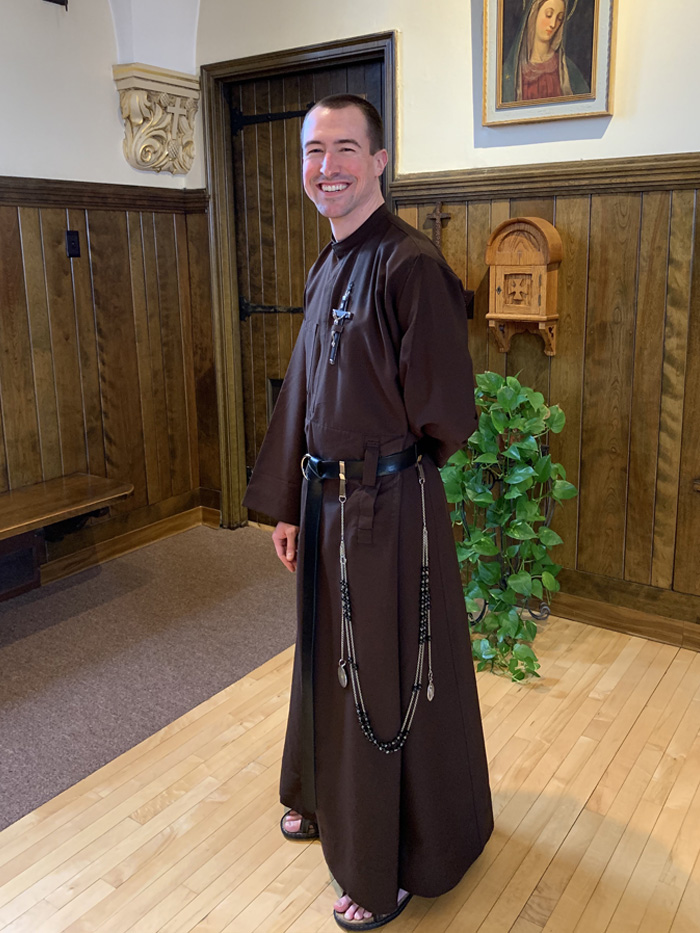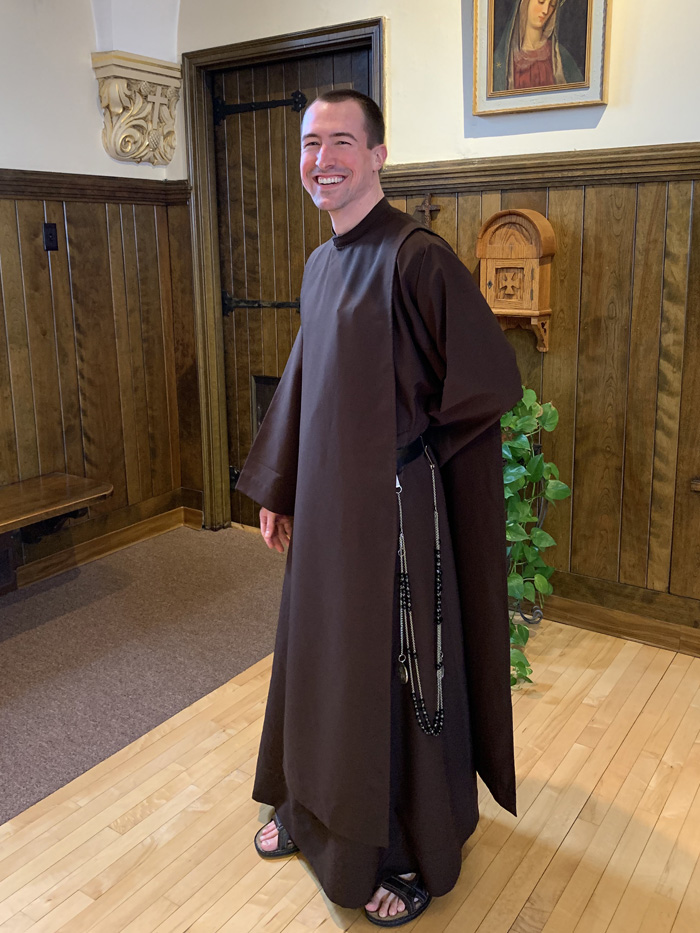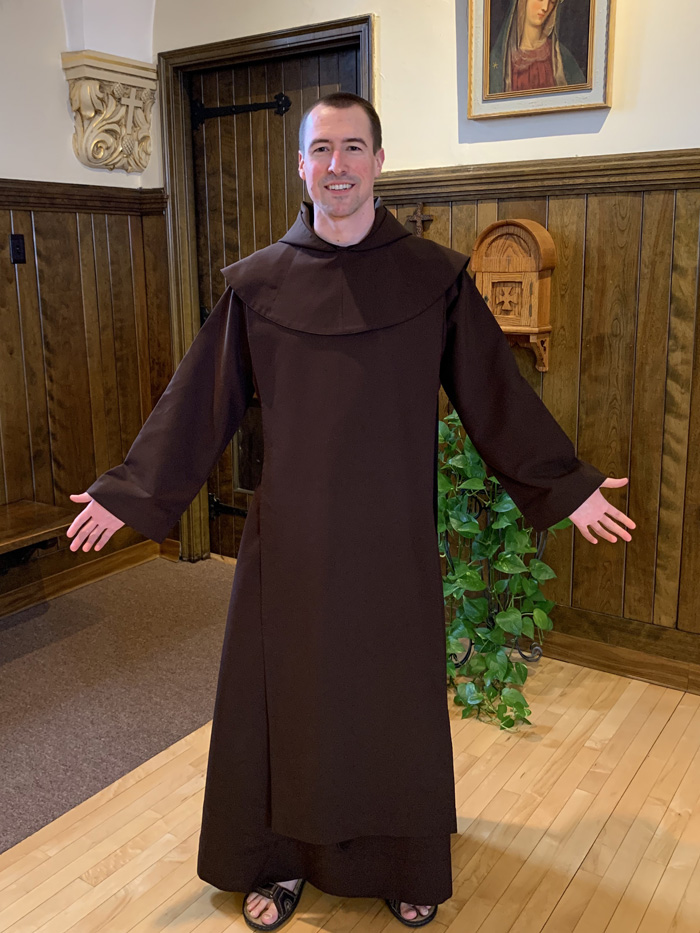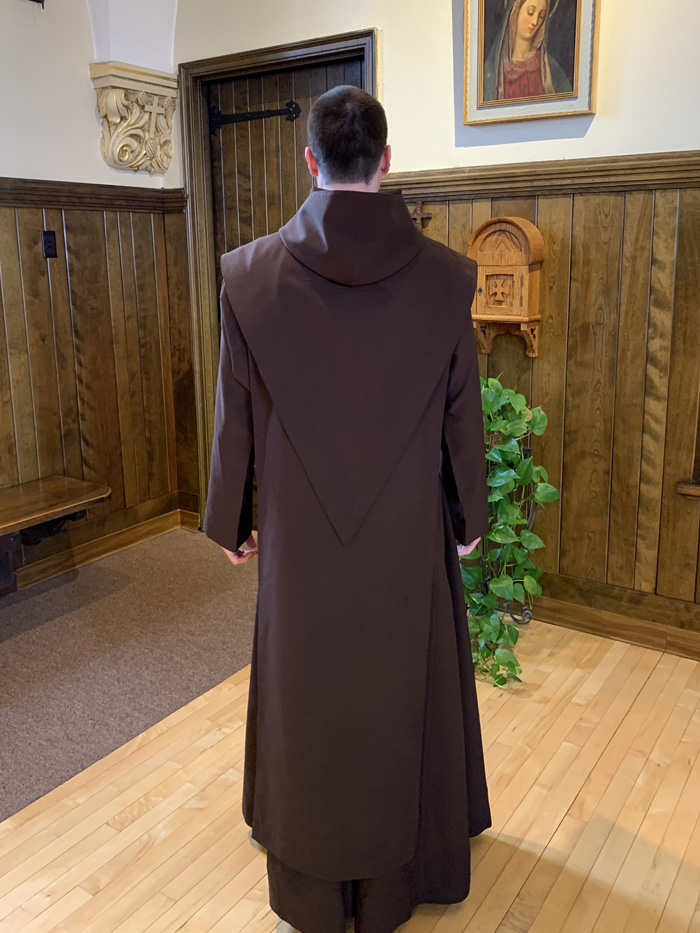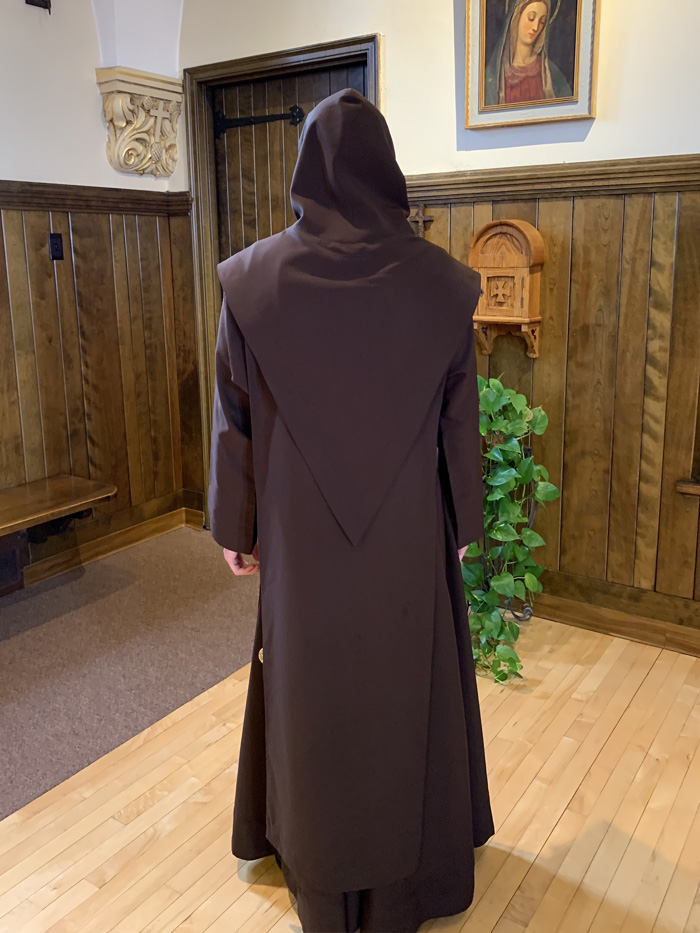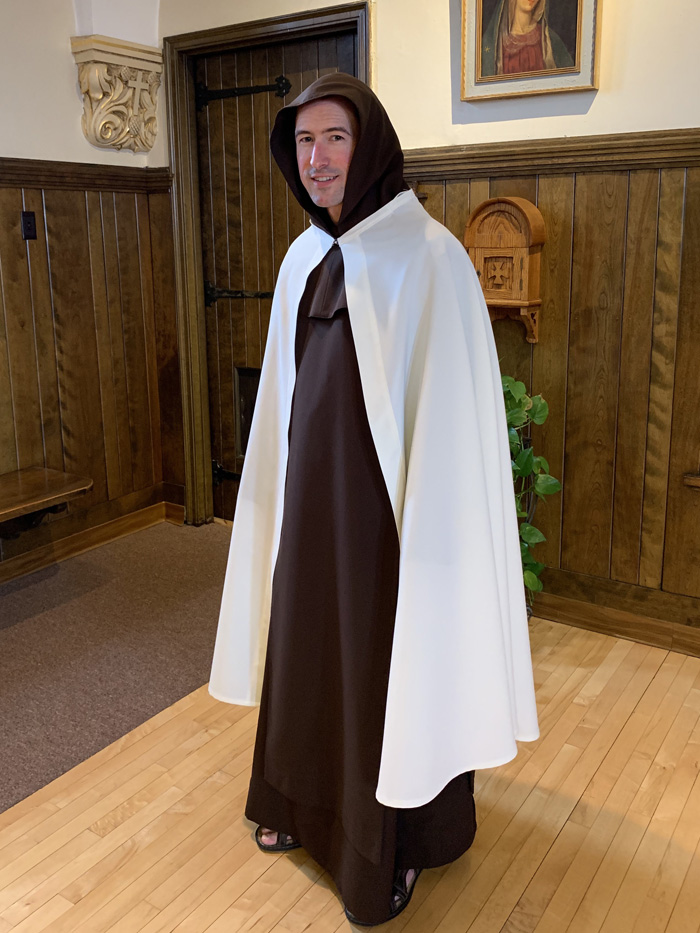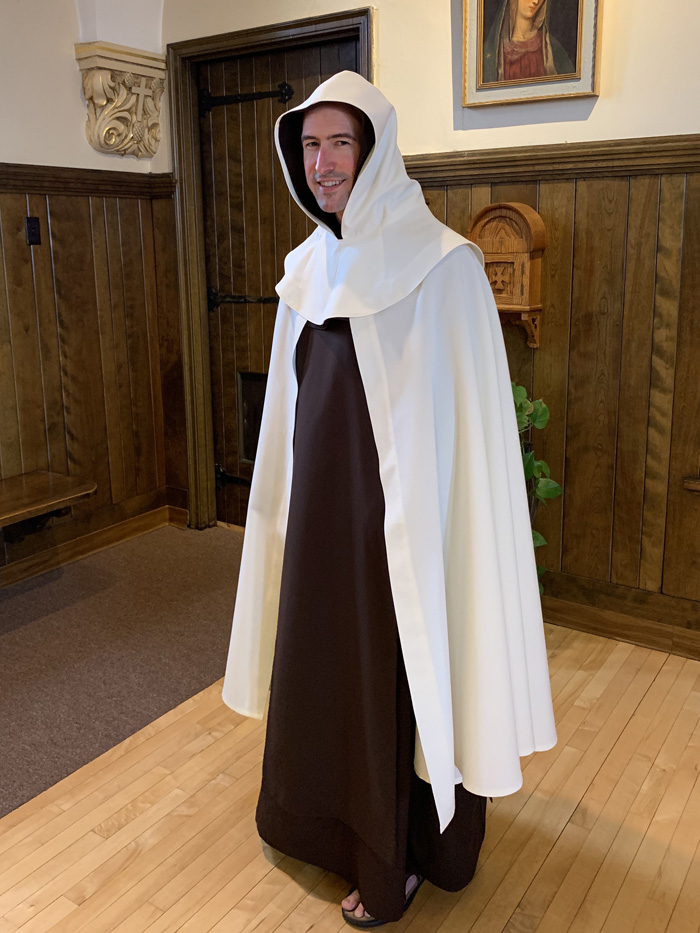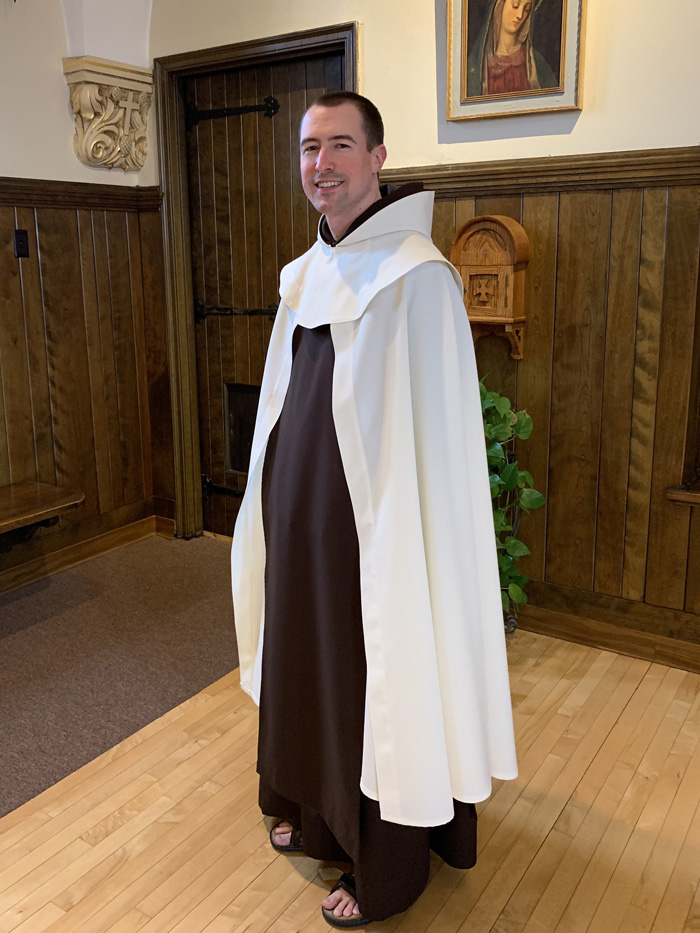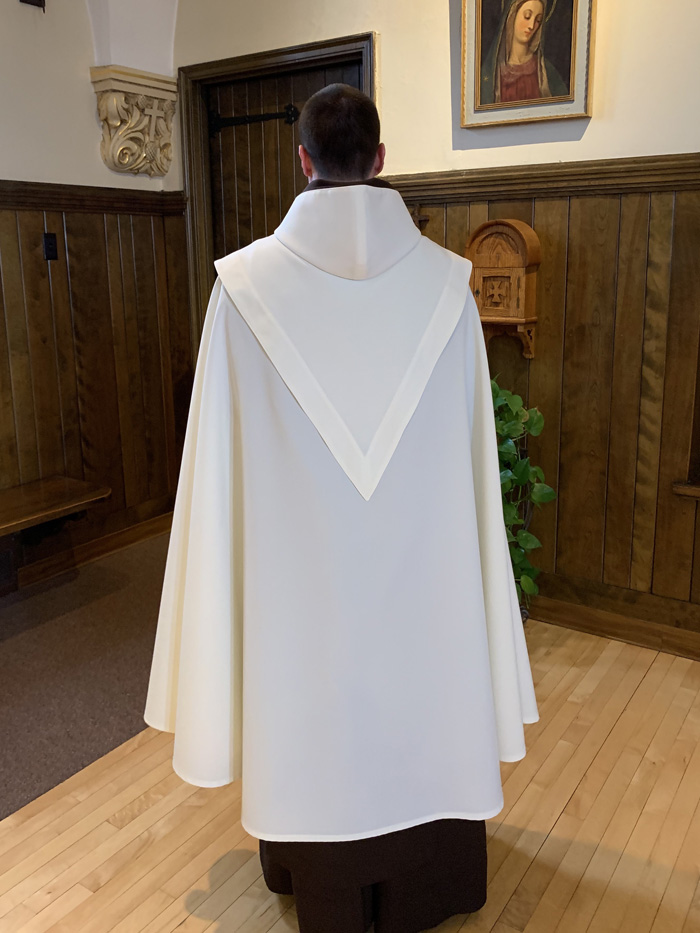The Habit of the Discalced Carmelites
“Since we belong to a family specially dedicated to our Lady, we wear the habit of her Order as a sign of our consecration.” – Constitutions #79
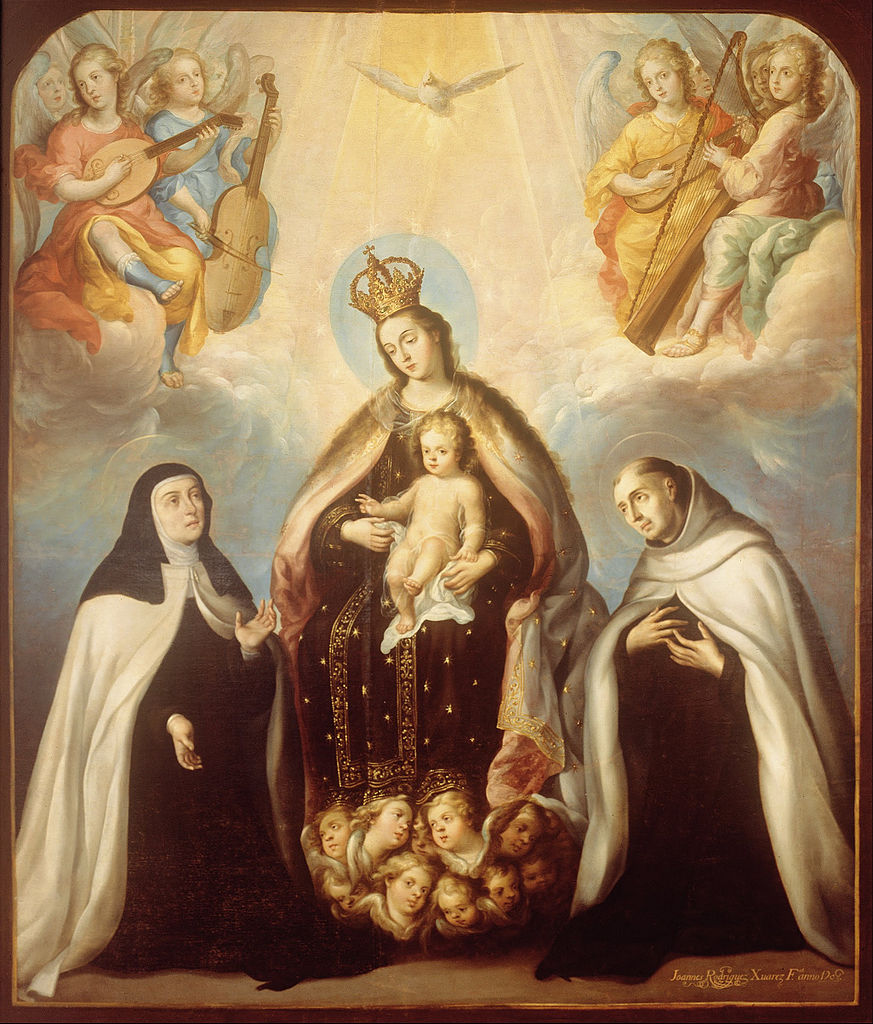
St. Teresa of Jesus & St. John of the Cross on the Habit
St. Teresa of Jesus, the Mother of the Discalced Carmel, was greatly devoted to the Carmelite habit. She said of it, “So I say now that all of us who wear this holy habit of Carmel are called to prayer and contemplation. This call explains our origin; we are the descendants of men who felt this call, of those holy fathers on Mount Carmel who in such great solitude and contempt for the world sought this treasure, this precious pearl of contemplation that we are speaking about” (Interior Castle V.1.2). For St. Teresa the habit pointed to living in a state of higher perfection, striving to practice the virtues, in surrendering our will to God in everything, in bringing our life into accordance with what the Lord ordains for it, and in desiring that His will and not ours be done (cf. Life 38.21, Interior Castle III.2.6).
According to tradition, the first habits for the Discalced Friars were designed and sewn by St. Teresa and her nuns at San Jose; among the first to wear this habit was St. John of the Cross in the first monastery of the reformed friars in Duruelo, Spain in 1568. The habit was very similar to what the Carmelite Friars were wearing at the time, but less ample and of a more coarse fabric. It symbolized a stricter observance and the embrace of evangelical poverty. At the beginning the reformed friars did not wear any covering on their feet. This gave rise to the name Discalced – ‘without shoes.’ However, instead of going barefoot, St. Teresa soon ordered the friars to wear simple sandals in order to bring balance to their penitential practices.
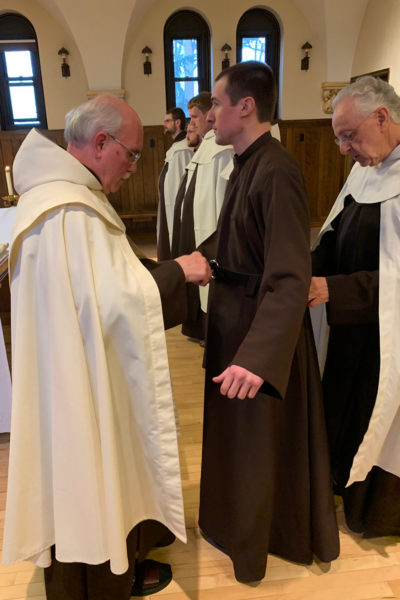
^The habit is a sign of our consecration to God, our intention and promise to devote ourselves entirely to Him in the life of prayer and self-giving charity.
Clothed with the New Man
Today the Friars continue to revere the holy habit and wear it proudly as a sign of their consecration in the Discalced Carmel. When a young man enters the novitiate he is first clothed with the brown tunic of the habit. The tunic is a sign of a man who has renounced the world and has taken on the life of Christ. “May the Lord clothe you with the new self, created in God’s image, in justice and holiness of truth.” The cincture, or belt, is then fastened around his waist. The Rule of St. Albert indicates that “our loins are to be girt with chastity (cf. Eph 6:11).” “When you were young, you girded yourself and walked where you would; but when you are old, you will stretch out your hands, and another will gird you and carry you where you do not wish to go” (Jn 21:18).
The new friar is then given the brown scapular. The scapular is a sign of Mary’s love for Carmelites and also represents the yoke and the cross of obedience. “Receive the sweet yoke of Christ and His burden that is light.” The capuche, or hood, a sign of humility, is then placed over the head of the friar. In the words of our Rule, “On your head set the helmet of salvation (Eph 6:7) and so be sure of deliverance by our only Savior, who sets His own free from their sins (Matt 1:21).” Finally, the friar is clothed with the white mantle. The mantle recalls the Elijan tradition and serves as a reminder of Our Lady’s immaculate purity which we are called to imitate. “Therefore let your vesture be ever unspotted as a token of interior purity.” The habit is traditionally complemented with sandals and a large rosary which hangs from the cincture. Finally, a profession cross is given that is worn over the heart and underneath the scapular.
The habit is a sign of our consecration to God, our intention and promise to devote ourselves entirely to Him in the life of prayer and self-giving charity. It serves to remind us of the immensity of what we have vowed: complete dedication to God and to the Mother of our Lord Jesus Christ. St. Teresa Benedicta of the Cross encourages us to strive for great fidelity in our blessed vocation: “When we receive the holy habit of Carmel, we pledge ourselves not only to extraordinary service to our divine Bridegroom, but also to his holy Mother . . . . By taking on the garment of righteousness, we thus oblige ourselves to strive for perfection with all our strength and to preserve the holy garment intact. There is no better way to serve the Queen of Carmel and to show her our gratitude than by contemplating her example and following her on the way of perfection.”


